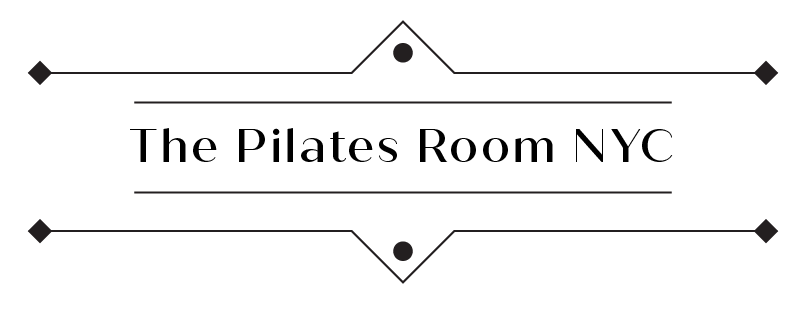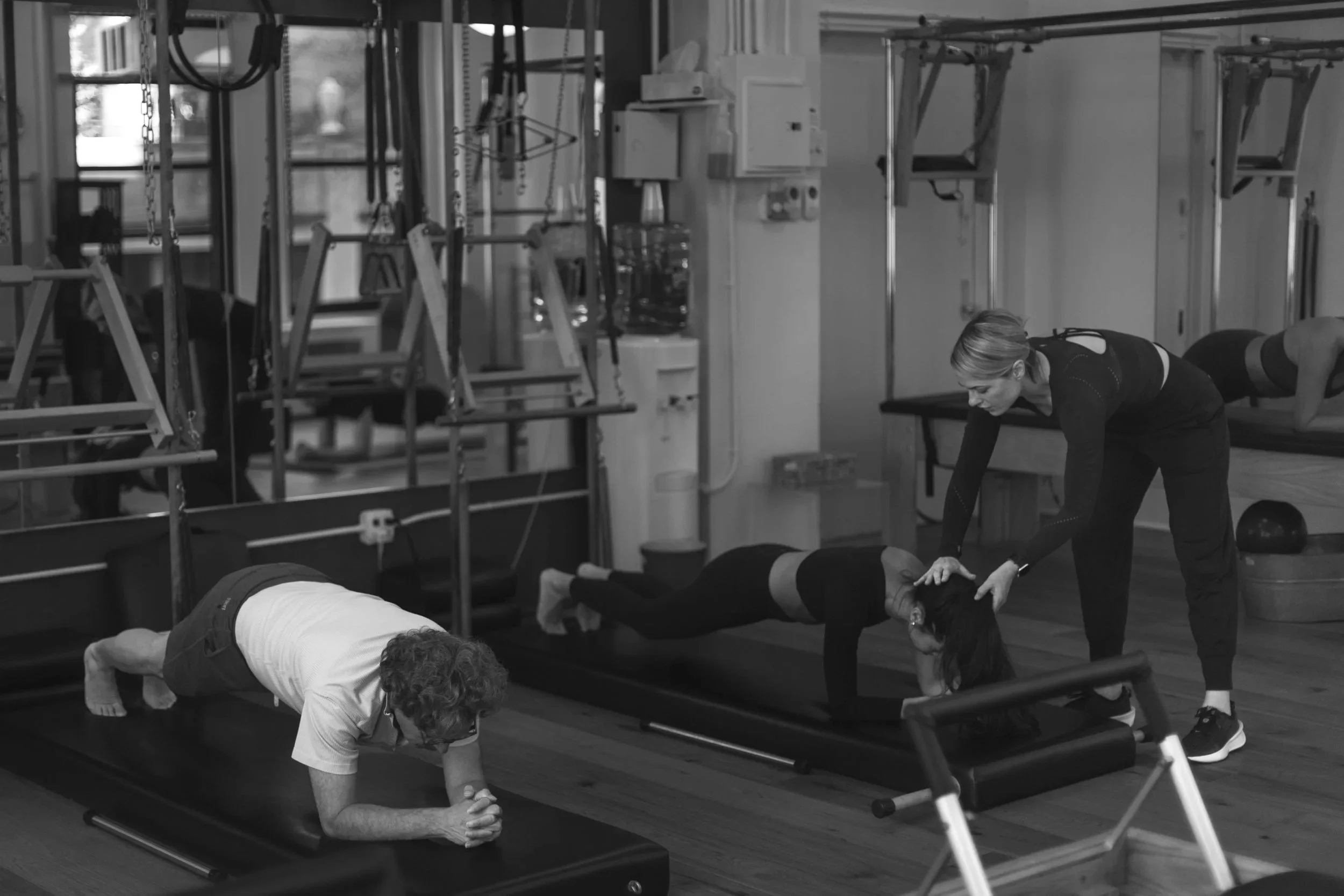Five Common Beginner Pilates Mistakes
Pilates can be misleading for newcomers who believe that the practice requires no more than peddling their limbs furiously through space on a mat or a reformer to achieve maximum success. Like parlor magic, Pilates requires a subtle but intense attention to the unseen. What’s happening beneath the body’s surface (Breath! Deep core activation! Posture!) is sometimes just as important—and requires as much practice and finesse—as overt muscle movement. For this reason, Pilates requires mental fortitude and the ability to maintain focus. It also requires a mind-muscle connection that may not initially be intuitive. Pilates further tests the patience of newcomers who might be accustomed to speeding through a workout, because in addition to muscle activation, Pilates movements require exquisite control.
Like every other activity worth practicing, Pilates requires practice and a good instructor who knows the pitfalls that beginners encounter and who can help them adapt and move through their practice seamlessly. Here are a few issues we’ve seen in our many years helping new practitioners adapt to Pilates movements:
Not Engaging the Core
It’s very easy to rely on utilitarian muscles, like hip flexors or the glorious giant muscles of the back, instead of activating deep abdominal muscles. It makes sense, too. Deep core muscles are not generally something people go through life considering, so it’s natural that we’d use our bigger, more overt muscle groups to do the heavy lifting. It’s something we all need to be reminded of during any type of physical activity. Engaging the muscles of the core will help the movement be more efficient and will strengthen those core muscles so that activating them becomes second nature. To engage these core muscles during movement, imagine zipping up a tight pair of pants (maybe those Jordache jeans from the early 80s?). Think of drawing your navel toward your spine without holding your breath.
Holding the Breath
And speaking of holding your breath…it’s more common than you think in Pilates. It is very easy to tense up during strenuous movements because you’re working so hard on alignment and control, that your breathing may be working against you. Or, as is very common with beginners, you may not be breathing at all. It seems counterintuitive that we’d need to remind ourselves not to hold our breath, especially during a rigorous workout, but because breath is essential for controlling flow in Pilates (and for remaining conscious!) it’s an important point to remember. To best control flow, inhale through the nose to prepare for the movement, and exhale through the mouth during the effort.
Neck and Shoulder Tension
As if we don’t destroy our neck and shoulder muscles enough during the work day while we’re hunched over our devices, that hunch can follow a newbie into Pilates class, making every movement more difficult. In Pilates, if you’re not paying close attention, it’s easy to shrug your shoulders or strain your neck, particularly during abdominal work. As a reminder to release your shoulders, repeat the mantra: Shoulders out of Ears! This will help you relax your neck and remind you to engage the upper abs instead. If that doesn’t work, or if you need help getting used to the movement, props (like a towel or a small inflatable ball) can help provide support.
Overarching or Flattening the Lower Back
As we mentioned above, the back muscles like to be involved in whatever movement we’re doing at all times. They’re used to compensating for our shortcomings in daily small movements, so they’re always primed to engage and take over. As a result, it’s easy to fall out of a neutral spine position. This might mean that you’re pressing the lower back too hard into the mat or it might mean the opposite: arching with too much flair. You may hear your instructor reminding you to keep your spine neutral.
Rushing the Movements
Some people just want to tear through their workout routines to simply be done. Newcomers to Pilates (and many other types of workouts) use momentum to help assist their muscles with a heavy lift. This is often subconscious (the body is smart, and when put on autopilot, it will expend as little energy as possible.) So it’s important to remain engaged during your workout and keep your mind on your movements so that you don’t let your body take over and involuntarily lose proper form. Pilates is about precision and control. It’s important to move slowly with intention. Fewer well-controlled reps are more effective than many rapid, haphazard reps.
Pilates may not be as easy as it looks, but proficiency is possible with practice! At the beginning, there’s a lot to remember, but repetition will help you store the best practices in your muscle memory. And, of course, don’t forget these reminders to help you focus when your attention drifts away: Ears out of Shoulders! Navel to Spine! Breathe! Keep a neutral spine! And…..Slow Down!
Here’s a short, beginner-friendly Pilates routine (about 10–15 minutes) that helps you practice avoiding the common mistakes we discussed above. You don’t need any equipment—just a mat and your reminder mantras.
Beginner Pilates Routine (10–15 Minutes)
Focus on Core engagement, posture, breath, and control
1. Pelvic Tilts (Warm-Up)
Reps: 8–10 slow tilts
Lie on your back with knees bent, feet hip-width apart. Inhale to prepare. As you exhale, tilt your pelvis slightly to flatten your lower back into the mat. Inhale to return to neutral.
Focus: Feel your core gently engage as you tilt. Keep shoulders relaxed.
Avoid: Overarching or pressing the spine too hard.
2. Dead Bug (Core Activation)
Reps: 6–8 reps per side
Lie on your back with arms extended toward the ceiling, knees bent 90 degrees above hips. Inhale. As you exhale, extend one leg and the opposite arm slowly. Inhale to return. Alternate sides.
Focus: Keep your back neutral (slight curve under lower back). Move with control.
Avoid: Letting your back arch or ribs flare up.
3. Single Leg Stretch (Abdominals)
Reps: 8–10 reps per leg
Lift your head and shoulders slightly off the mat (or keep down if neck feels strained). Bring one knee into the chest, extend the other leg at a 45° angle. Switch legs.
Focus: Exhale on each switch. Keep core pulled in and neck relaxed.
Avoid: Pulling on your neck or letting the lower back pop off the mat.
4. Shoulder Bridge
Reps: 8–10 reps
Lie on your back, knees bent, feet flat. Inhale. Exhale to slowly lift your hips into a bridge, one vertebra at a time. Inhale at the top, exhale to roll down slowly.
Focus: Press evenly through both feet. Move with precision.
Avoid: Arching the back or rushing the movement.
5. Swimming (Back & Glutes)
Reps: 20 seconds
Lie on your stomach. Extend arms and legs. Inhale. As you exhale, lift opposite arm and leg, alternating quickly like you're swimming.
Focus: Keep your head in line with your spine. Engage glutes and upper back.
Avoid: Straining your neck or lower back.
6. Cat-Cow Stretch (Cool Down)
Reps: 6 slow rounds
On hands and knees, inhale to arch the spine (cow), lifting chest and tailbone. Exhale to round the spine (cat), drawing belly in.
Focus: Gentle movement to relax the spine and reset posture.
Avoid: Dumping into shoulders or rushing.

